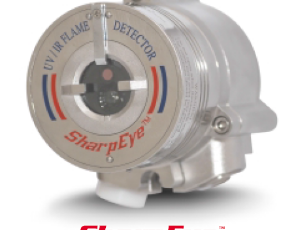In the oil and gas industry, it’s important for facilities to have the best possible flame detection equipment. However, because there are various hazards that workers must deal with on a daily basis, it can be difficult to know which types of flame detectors will work best in a particular environment. For those oil and gas facilities that need advanced flame analysis in industrial boilers and multi-burner utilities, here are some of the key components to take into consideration.
Monitoring the Facility
In areas where industrial boilers and multi-burner utilities are located, having constant monitoring is crucial to ensure worker safety. For this reason, a flame detector can spell the difference between life and death in many cases. If a facility is located in a remote location, having the advantage of 24/7 monitoring can help to alert management as well as safety personnel in the event combustible gases lead to a fire.
Data Networks and Transmission
When a situation arises in an oil and gas facility, data from the site needs to be received by management personnel as soon as possible. To make this happen, more and more companies now rely on detectors that transmit data in real-time, allowing individuals to have instant access to facts and figures on their smartphones, tablets, or laptop computers. Along with being able to decide if workers need to be evacuated, having this data will also allow management to calibrate detectors to ensure additional data is as accurate as possible. By knowing all detectors are properly calibrated, safety personnel will be able to analyze data from the accident and gain a better understanding of what happened and how to prevent it from happening in the future.
Confined Spaces
In most oil and gas plants and refineries, boilers and burners are usually located in areas where there are numerous confined spaces. In these situations, workers need to be extremely careful to not put themselves in dangerous situations. But by using such equipment as an IR flame detector, it’s possible to use the detectors to check for extremely small levels of combustible gases that can result in a fire. Along with combustible gases, a UV flame detector can also monitor levels of hydrocarbons to ensure workers do not become trapped in areas and will be unable to evacuate before tragedy strikes.
Early Detection
Whereas many flame detection systems alert workers only when they are in a hazardous situation, others that use advanced detection analysis can alert personnel to dangerous situations prior to anyone entering the area. Because of this feature, numerous companies now employ these systems near their boilers and multi-burner utilities in an effort to keep workers and equipment safe. As technology in this field has advanced in recent years, many companies now also employ portable handheld monitors to help employees who go to numerous places in a facility each day. With these monitors, employees can not only feel much safer on the job, but also relay information to remote locations regarding their status.

